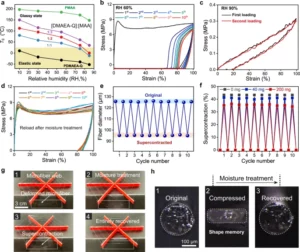With Technology and Science working at their peak, researchers are always pushing boundaries to develop new outcomes, offering differential uses. Hydrogels are new and appear as a common base for everyday products – toothpaste, cosmetics, disposable diapers, etc. Also, hydrogel microfibers help create human-like soft tissues, prosthetics, smart clothes, and wearable devices.
In the medical field, these are similar to the body tissue of the living. The typical uses include – creating contact lenses and bulking agents in tissues as part of nucleus replacement technology and nerve guidance conduits.
Hydrogels – Existing Uses
Hydrogel microfibers so far have been undergoing changes over three generations. And here is a list of the existing usabilities they possess.
- Biocompatibility: Research suggests hydrogels are great for soft tissue regeneration, backing up the theory of biocompatibility.
- Wound Dressing: As per another research, Hydrogel microfiber can be a great wound dressing option. Here is why? These are available with great permeability, providing a moisture-combined environment for wound repair with a 3D structure.
- Pulp Regeneration: It is essential for the dentin pulp to regenerate and for one to regain tooth vitality. According to research, hydrogels prepared in injectable forms offer a great way to do the same.
- Neural Tissue Repair: Neural Polymer Hydrogels come as top-notch biocompatible materials resembling the environment of humans’ extracellular matrix. Among all, hydrogels have proved themselves as a great candidate for differentiating and culturing cells of neural origin.
Looking Into Hydrogel Microfibers That Are Crack Resistant With Self Healing Properties
Researchers at China’s Donghua University have developed a hydrogel-based microfiber that is resistant to cracks and has self-healing capabilities. In the making, the team took inspiration from “how spiders spin their webs.”
As per Shengtong Sun (part of the team), most synthetic hydrogel microfibers are spun, mimicking the regular technique for making silk outputs. These are not reliable for damage resistance and have great limits with durability. On the other hand, following a spider-spinning technique did offer them access to considerable toughness, with resistance to unplanned wear and tears.

Spiders generally create their web using a crystalline solution, where the protein molecules can flow freely, besides retaining some order. The final webs come as a hierarchical nanoconfined structure comprising beneficial mechanical properties.
Moving into a similar path, the researchers prepared the spinning dope by polymerizing UV-induced DMAEA-Q in a high-molecular-weight presence. The robust hydrogel microfiber can mimic the nanoconfined hierarchical structure within spider silk.
Result
The team got to define the nanoconfinement specific to the hydrogel microfiber as high-density H-bond clusters. These are embedded into an ionically complex hygroscopic ductile matrix. Thus endowing the fiber with great extensibility, comprehensive crack resistance, great modulus, moisture sensitivity, and self-healing nature. Such a combination was never reported among other artificial fibers developed so far.

The team also hopes that nanoconfinement design at the molecular level, at present, can be a great step towards artificially robust and smart hydrogel microfibers. And those can be used to create miniature soft machines or robots, wearable devices, and prosthetic limbs in future.
Hydrogel microfibers are getting increasingly popular because of their inbuilt traits. Moreover, the research team is working to introduce even stronger nanocrystals to enhance the pre-existing mechanical properties of hydrogel fibers.



